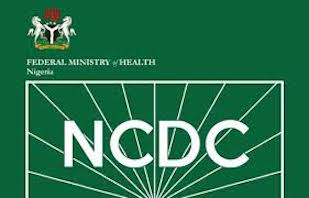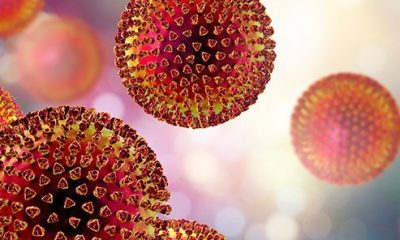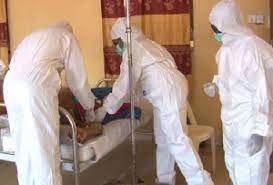Health
COVID-19: NCDC Activates Three More Laboratories, Total Now 23

The Nigeria Centre for Disease Control (NCDC) says it has activated three additional laboratories in the country, bringing the total number of laboratories in Nigeria to 23.
Dr Chikwe Ihekweazu, Director-General of NCDC, told the News Agency of Nigeria(NAN), on Sunday in Abuja that it would help to increase the nation’s testing capacity as well as curb the spread of the pandemic.
Ihekweazu said that the three additional laboratories were in the.
University of Port Harcourt Teaching Hospital, Rivers State University Teaching Hospital Satelite Molecular Laboratory and the University of Benin Teaching Hospital.He ssaid some states had more than one laboratory, listing them to include Edo, Lagos and Kano.
NAN reports that the 20 laboratories include the NCDC National Reference Laboratory, FCT, Defence Reference Laboratory, FCT,
Virology Laboratory of Lagos University Teaching Hospital, Lagos State, Biosafety Level-3 Laboratory, Lagos State.
Irrua Specialist Teaching Hospital, Edo state
Nigerian Institute of Medical Research, Lagos State, Virology Laboratory of University College Hospital, Oyo State, Federal Teaching Hospital Abakaliki (FETHA), Ebonyi State.
African Centre of Excellence for Genomics of Infectious Diseases, Osun State. National Veterinary Research Institute,Vom, Plateau State. Aminu Kano Teaching Hospital, Kano State. DNA Laboratory, Kaduna State, University of Maiduguri Teaching Hospital, Borno State.
Centre for Advanced Medical Research and Training (CARMET), Usmanu Danfodio University, Sokoto, Africa Centre of Excellence for Neglected Tropical Diseases and Forensic Biotechnology, ABU Zaria, Kaduna State. Centre for Infectious Disease Research, Bayero University Kano, Kano State.
54gene Mobile Laboratory, Ogun State, 54gene Mobile Laboratory, Lagos State, 54gene Mobile Laboratory, Kano State. Mobile laboratory, Delta State.
The D-G said that the agency had come up with Polymerase Chain Reaction (PCR) testing strategy, to scale up COVID-19 virus testing.
“At the moment, the COVID-19 tests that we report daily are coming from the PCR, they detect the genetic information of the virus, the RNA. That’s only possible if the virus is there and someone is actively infected.
“PCR tests are used to directly detect the presence of an antigen, rather than the presence of the body’s immune response, or antibodies.
“By detecting viral RNA, which will be present in the body before antibodies form or symptoms of the disease are present, the tests can tell whether or not someone has the virus very early on,” he explained.
Ihekweazu said that PCR gives a good indication of who is infected.
He noted that by scaling PCR testing to screen vast swab samples from within a population like Nigeria, the NCDC officials could get a clearer picture of the spread of a disease like COVID-19 within a population.
He said that It’s worth noting that PCR tests could be very labour intensive and involve several stages at such errors may occur between sampling and analysis.
“This is why the agency has focused on strengthening quality assurance in the laboratories,” he said.
According to him, COVID-19 pandemic, has made the importance of reliable and accessible testing to screen for the virus increasingly obvious.
He said PCR testing had been upgraded from the initial testing procedures and with additional automation to reduce errors.
“Remember as we take swabs from people, we are also faced with the challenge of other organisms floating around, we are essentially dealing with the situation to ensure the ‘right’ result. (NAN)
Health
Millions of Children Experience Daily Domestic Violence in Schools, Homes Globally – WHO
Hundreds of millions of children and adolescents around the world face daily violence in their homes, schools, and elsewhere which could have lifelong consequences.The World Health Organisation (WHO) said this on Thursday.The violence includes being hit by family members, being bullied at school, as well as physical, emotional, and sexual violence, WHO said.
In most cases, violence occurs behind closed doors. More than half of those aged two to 17 or more than a billion minors in total experience violence each year according to the WHO. In three out of five children and adolescents, it is physical violence at home, with one in five girls and one in seven boys experiencing sexual violence.Between a quarter and half of minors are affected by bullying according to the information provided.Only half of the children reportedly talk about their experiences of violence and less than 10 per cent receive help.Lifelong consequences could include depression and anxiety disorders, or tobacco and drug use.As a result, many children do not reach their learning potential in school.Against the backdrop of being highly preventable, violence remains a horrific day-to-day reality for millions of children around the world leaving scars that span generations,” said Tedros Adhanom Ghebreyesus, WHO director general.The UN’s first conference on violence against children opened in Bogota, Columbia on Thursday.At the two-day conference, more than 100 countries pledged to find ways to better support overwhelmed parents and introduce school programmes against bullying and for healthy social behaviour.They also pledged to raise the minimum age for marriage.Some countries wish to generally ban children from being hit at school or home. (dpa/NAN)Health
WHO Identifies 17 Pathogens as Top Priorities for new Vaccine Development

The World Health Organisation (WHO) has listed 17 bacteria, viruses and parasites that regularly cause disease as top priorities for new vaccine development.WHO, in a study published on Tuesday, reconfirmed long-standing priorities for vaccine research and development (R&D), including for HIV, malaria, and tuberculosis – three diseases that collectively take nearly 2.
5 million lives yearly. The study is the first global effort to systematically prioritise endemic pathogens based on their regional and global health impact. Attention is also given to pathogens such as Group A streptococcus, which causes severe infections and contributes to 280,000 deaths from rheumatic heart disease, mainly in lower-income countries.Another new priority is Klebsiella pneumoniae — a bacteria that was associated with 790,000 deaths in 2019 and is responsible for 40 per cent of neonatal deaths due to blood infection (sepsis) in low-income countries.The new study supports the goal of ensuring that everyone, everywhere, can benefit from vaccines that protect against serious diseases.It aims to shift the focus in vaccine development away from commercial returns towards regional and global health needs, WHO’s Dr Mateusz Hasso-Agopsowicz, who works in vaccine research, said in a statement.He explained that in the past, vaccine R&D typically was influenced by profitability.“As a result, diseases that severely affect low-income regions received little attention.“We hope this represents a critical shift where we want to change the focus from commercial perspective profitability of new vaccines towards the actual health burden so that the new vaccine research and development is driven by health burden and not just commercial opportunities,” he said.To carry out the study, WHO asked international and regional experts what they think is important when prioritising pathogens for vaccines R&D.Criteria included deaths, disease and socioeconomic impact, or antimicrobial resistance.“We had asked experts that have expertise in pathogen epidemiology, clinicians, paediatricians, vaccine experts from all of the WHO regions, to ensure that the list and the results that we produce really reflect the needs of diverse populations worldwide,” Hasso-Agopsowicz said.Analysis of those preferences, combined with regional data for each pathogen, resulted in the top 10 priority pathogens for each of WHO’s six regions globally.The regional lists were then consolidated to form the global list, resulting in the 17 priority endemic pathogens for which new vaccines are urgently needed.To advance vaccine R&D, WHO has categorised each pathogen based on the stage of vaccine development and the technical challenges involved in creating effective vaccines.Hasso-Agopsowicz said the study is expected to guide future vaccine R&D investments, including funders, researchers and vaccine developers, and also policymakers as they “can decide whether to introduce these vaccines into immunisation programmes.” (NAN)Health
UCH JOHESU Suspends Strike

The Joint Health Sector Unions (JOHESU), University College Hospital (UCH), Ibadan,has suspended the strike it embarked on Oct. 25.The workers resumed work on Friday morning.The seven-day nationwide warning industrial action embarked upon by the unions was to press home their demands ofadjustment of Consolidated Health Salary Structure as was done with the Consolidated Medical Salary Structure sinceJan.
2, 2014 and implementation of consultant cadre for pharmacists in federal health institutions. Others are upward review in the retirement age from 60 to 65 years for health workers and 70 years for consultants, andpayment of outstanding salaries of JOHESU members in professional regulatory councils.The UCH JOHESU Chairman, Mr Oladayo Olabampe, said that the strike was suspended as directed by the national body.He explained that “the suspension followed an MoU signed between JOHESU national leadership and Federal Government.“The Federal Government asked for a maximum of six weeks counting from Oct. 31, to meet our demands.“Based on the MoU signed, the JOHESU National Executive Council met and resolved that the strike be suspended on Fridaynationwide.”According to him, JOHESU UCH is obeying the order, and workers have resumed work.Olabampe said that if the demands were not met after the six weeks, they would embark on an indefinite strike. (NAN)


























